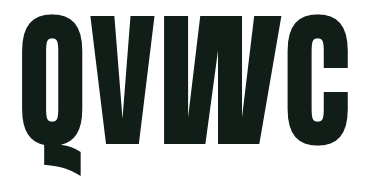Meet our feminist historian in residence barbara wheeler
Barbara Wheeler is a cultural heritage management specialist and a fibre and textile artist. Her multidisciplinary approach delivers heritage projects that resonate with community values and integrity. Barbara has been residing in New Zealand since 2019 but has since returned to Melbourne to work as Feminist Historian in Residence with the QVWC.
Can you tell us what it means to be a feminist historian?
It means comprehending and analysing the gap between the existing history and the lived experiences of women, so that we can enrich the public record and build a more holistic appreciation of the past.
What will your role at the QVWC entail?
My aim is to research and record stories of women’s lived experiences of the Queen Victoria Hospital for Women and Children - as staff, supporters and patients.
Being a Marxist feminist, I will be researching and documenting the women's labour - in paid and unpaid jobs - at the Hospital. We will also be developing creative ways to share that information and offer their stories.
Why is it important to look at history through a feminist lens?
It's about time we did. This project will enable us to contribute to the public record of rich and diverse stories of women's roles in history.
In order to reveal women's contributions, to celebrate them and educate ourselves about what kind of place Australia really is, we use a feminist lens. In order to build women's contributions into the stories about who we are, we use a feminist lens.
I believe that social class is as important as gender in the stories about the past, so we will be focussing on women who worked in skilled and unskilled jobs at the hospital, professional women who provided medical and allied services, as well as women who worked in unpaid jobs such as raising funds for the Hospital.
I also believe that the Hospital itself is an entity that would have been more than a workplace. It is an idea - a precious ideal and a unique locus of women’s lived experiences of the Australian/Victorian health system. This institution existed because of women's vision, intelligence and labour. Let's use a feminist lens to explore those stories.
Let's talk about women's work in all its diversity, until those stories become familiar and referred to when people discuss Melbourne's identity.
As well as being a feminist historian, you're a textile and fibre artist, can you talk us through your art process?
My studio is called every thread counts and it started in 2016 as a means to promote slow fashion. I have always looked to the land for inspiration and partnership approaches with nature to create art. Since 2020 I have focused on foraging natural fibres to make vessels and sculptures. The emphasis I place on waste textiles and foraged fibres is their transformation back into usefulness. Whimsey and joy; working with found materials to find their new role in a basket, sculpture or homeware plays a large role in my making process.
How does your art practice and your work as a feminist historian intertwine?
I am a creative, strategic thinker who applies many principles to the task in hand to find a process and a pathway that will support the project I am working on. My training in communications, linguistics, visual arts and applied science as well as work in community arts, public policy and cultural heritage management mean that I bring a broad lens to my work as a feminist historian. I suppose it means that I am happy not to know the outcome of a project before I start, but to trust the process and the partners to generate a rich and meaningful result.
As you settle back into Melbourne life, what are you most looking forward to?
Good parmesan, fresh herbs and swims at my local pool. Oh, and seeing my lovely daughter as often as we like.
Interview by Freya Bennett


